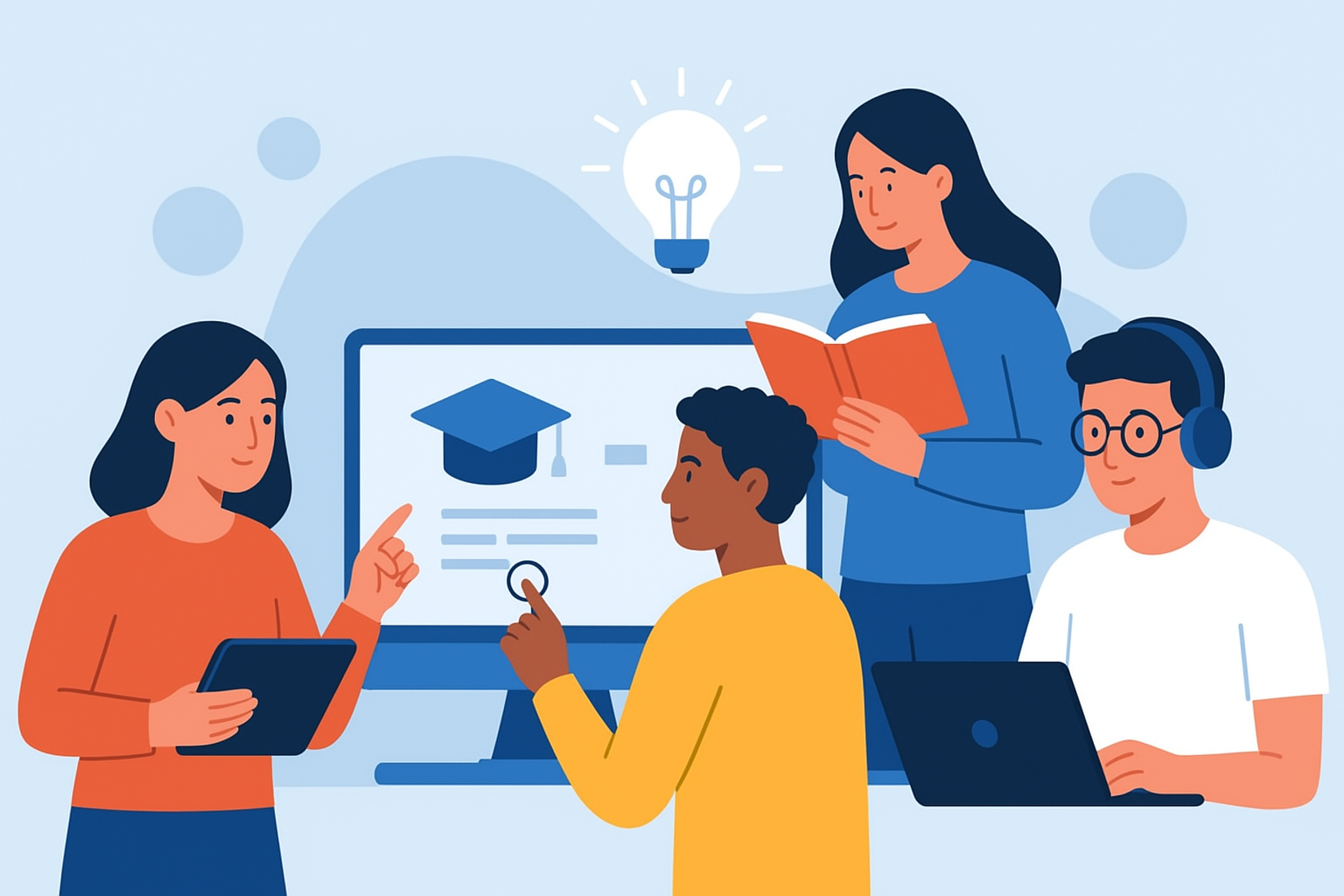
The Future of Education: How Technology Is Shaping the Way We Learn
Education has always been the cornerstone of human progress. From traditional classrooms with chalkboards to today’s smartboards, the way we learn continues to evolve. In recent years, technology has revolutionized the education sector, creating opportunities for students, teachers, and lifelong learners to access knowledge in innovative ways. The future of education is no longer confined to textbooks and classrooms; instead, it is being reshaped by digital tools, artificial intelligence, online platforms, and interactive experiences.
In this article, we will explore how technology is transforming education, the benefits it brings, challenges it poses, and what the future holds for learners around the world.
1. The Rise of Digital Learning
The rapid growth of the internet and smartphones has made education more accessible than ever before. Online platforms such as Coursera, Udemy, and Khan Academy have brought quality learning to anyone with a connection, regardless of geography. This accessibility means that a student in a rural village can now learn from top universities without physically being there.
Digital learning is not just about convenience; it’s about breaking barriers. It allows students to choose courses tailored to their interests, learn at their own pace, and access content in multiple formats such as videos, podcasts, and interactive simulations.
2. Personalized Learning with Artificial Intelligence
One of the most exciting shifts in education is personalized learning powered by artificial intelligence (AI). Traditional classrooms often follow a one-size-fits-all approach, but AI can analyze each student’s performance, strengths, and weaknesses to recommend customized lessons.
For example, AI-powered platforms can identify when a learner struggles with mathematics and adjust the difficulty level of exercises accordingly. Teachers also benefit from AI tools, as they can receive insights into student progress and provide targeted support where it’s needed most.
In the future, AI tutors may act as personal learning assistants, guiding students through their educational journey and providing feedback instantly.
3. Virtual Classrooms and Remote Learning
The global pandemic accelerated the adoption of remote learning, showing both the potential and challenges of virtual classrooms. While online classes became a necessity during school closures, they also highlighted how flexible education could be.
Virtual classrooms are no longer limited to video calls. Platforms now include interactive whiteboards, breakout rooms, real-time quizzes, and collaborative tools that mimic the dynamics of a physical classroom. Students can connect with peers across the globe, creating cross-cultural learning experiences.
This shift demonstrates that education doesn’t have to be limited to location or time—it can be global, inclusive, and available 24/7.
4. Gamification and Interactive Learning
Engagement is a critical factor in education. Technology has introduced gamification—the use of game elements such as points, rewards, and challenges to make learning fun. Apps like Duolingo have shown how gamified learning can motivate learners to stay consistent and improve retention.
Interactive simulations and virtual labs also allow students to experiment with concepts safely. For instance, medical students can practice surgeries in a virtual reality environment before stepping into real operating rooms. Science students can conduct virtual experiments that would otherwise be too costly or dangerous.
This immersive approach to learning not only keeps students motivated but also helps them understand complex concepts through hands-on experiences.
5. The Role of Virtual and Augmented Reality
Virtual Reality (VR) and Augmented Reality (AR) are shaping the future of education in remarkable ways. VR creates fully immersive environments where learners can explore historical events, visit distant countries, or even journey through the human body. AR, on the other hand, overlays digital information onto the real world, enriching textbooks with 3D models and interactive visuals.
For example, instead of just reading about ancient civilizations, students can take a virtual tour of the pyramids of Egypt. Instead of imagining the solar system, they can interact with 3D models of planets right from their classroom.
These technologies transform abstract concepts into real, memorable experiences, making learning more engaging and effective.
6. Education Without Borders
Technology is bridging the gap between different cultures, languages, and geographies. Language translation tools, real-time captioning, and international collaboration platforms allow students to learn together despite differences. This global exchange of knowledge helps learners understand diverse perspectives and prepares them for a connected world.
International universities are increasingly offering online degrees, making higher education more affordable and accessible. Students who once struggled to access quality education can now enroll in global programs without leaving their homes.
7. Benefits of Technology in Education
The integration of technology in education offers numerous benefits, including:
- Accessibility: Learning materials are available anytime, anywhere.
- Flexibility: Students can learn at their own pace and revisit lessons as needed.
- Affordability: Online courses often cost less than traditional education.
- Engagement: Interactive tools keep learners motivated and interested.
- Inclusivity: Tools like speech-to-text and screen readers support students with disabilities.
These benefits highlight how technology is not just a luxury but a necessity for modern education systems.
8. Challenges in the Digital Transformation of Education
Despite its advantages, technology in education comes with challenges:
- Digital Divide: Not all students have access to reliable internet or devices.
- Over-reliance on Technology: Too much screen time can affect mental and physical health.
- Teacher Training: Educators need proper training to use new tools effectively.
- Quality Control: Not all online resources maintain high educational standards.
To truly shape a better future, governments, schools, and communities must work together to address these gaps and ensure technology benefits all learners.
9. The Future Ahead
The future of education is a blend of technology and human connection. While machines can personalize lessons and provide instant feedback, the role of teachers as mentors, motivators, and guides remains irreplaceable.
We can expect future classrooms to combine traditional teaching with digital enhancements. Hybrid learning models will allow students to experience both face-to-face interaction and online flexibility. Lifelong learning will also become essential, as industries evolve and demand new skills throughout one’s career.
Education will increasingly focus on critical thinking, creativity, problem-solving, and digital literacy—skills that prepare students for jobs that may not even exist today.
Conclusion
Technology is not replacing education; it is transforming it. From AI tutors and virtual reality classrooms to online platforms and global collaboration, the way we learn is evolving at an unprecedented pace. The future of education promises to be more inclusive, flexible, and engaging than ever before.
By embracing innovation while addressing challenges, we can create a world where quality education is accessible to everyone—regardless of where they live or what resources they have. In this new era, education is not limited by walls but expanded by technology, opening endless opportunities for learners of all ages.

